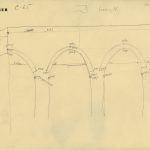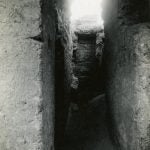Ugly Object of the Month — December 2016
SUZANNE DAVIS, Curator of Conservation
Hello, readers! How are you? I ask because a lot of people I know are feeling tired and stressed. The academic term is ending. Some people have to take a lot of exams, other people have to grade a lot of exams. If you’re a graduate student, you might be doing both. What about your plans for the winter break? All set? Well, that’s great. I’m very pleased for you. Sadly, some of us have not been so organized and now we are really regretting it.
What’s the solution? I’ll tell you, although you might’ve already guessed. Yes, it IS once again time to invite relaxation and happiness into your life by contemplating an ancient, ugly object. Some people might call this kind of activity “procrastination,” but those are not people we care to know at the moment. So enough jibber jabber, let’s get to it.

Clay figurine of a woman. 3rd–4th century AD. Karanis, Egypt. KM 7525.
I know I say this about every Ugly Object, but this one is really the best. When it was excavated in 1928 in Karanis, Egypt, the excavators described it as a “roughly made mud figurine, small,” and categorized it as a toy. The last bit might not be true, but the rest checks out. The object is made of unfired clay, it’s burned, and it’s broken. Not the best-looking figurine on the block, in other words, but it is surprisingly detailed and well-crafted for something made of mud. It fits easily in the palm of your hand and has a hairdo reminiscent of Bart Simpson’s. The breasts and necklace are carefully delineated, as is decoration around the navel. And, although you can’t see it in this photo, shoulder blades have been modeled on the back.
Was it really a toy? Today, scholars think not. Former IPCAA student Drew Wilburn has studied this figurine as evidence of magic at Karanis, and he writes that it was most likely used as part of a love spell. Although the suggestion is that this spell was compulsive in nature (you know, a spell to make someone fall in love with you), the exact details of the figurine’s use are not easy to determine.
The bottom line, for me, is that it was created in the service of love. Somebody loved somebody else, and wanted it to be reciprocal. We don’t know how things worked out for our ancient, lovelorn friend but, in his or her memory, we can take a few minutes today and in the days that come to send love to people we care about. Thankfully, we don’t need a spell, or a burned mud figurine. Because let’s be honest — it would be hard to top the perfection of this one. Also, now we have texting and Snapchat.
Ugly Object of the Month — December 2016 Read More »























